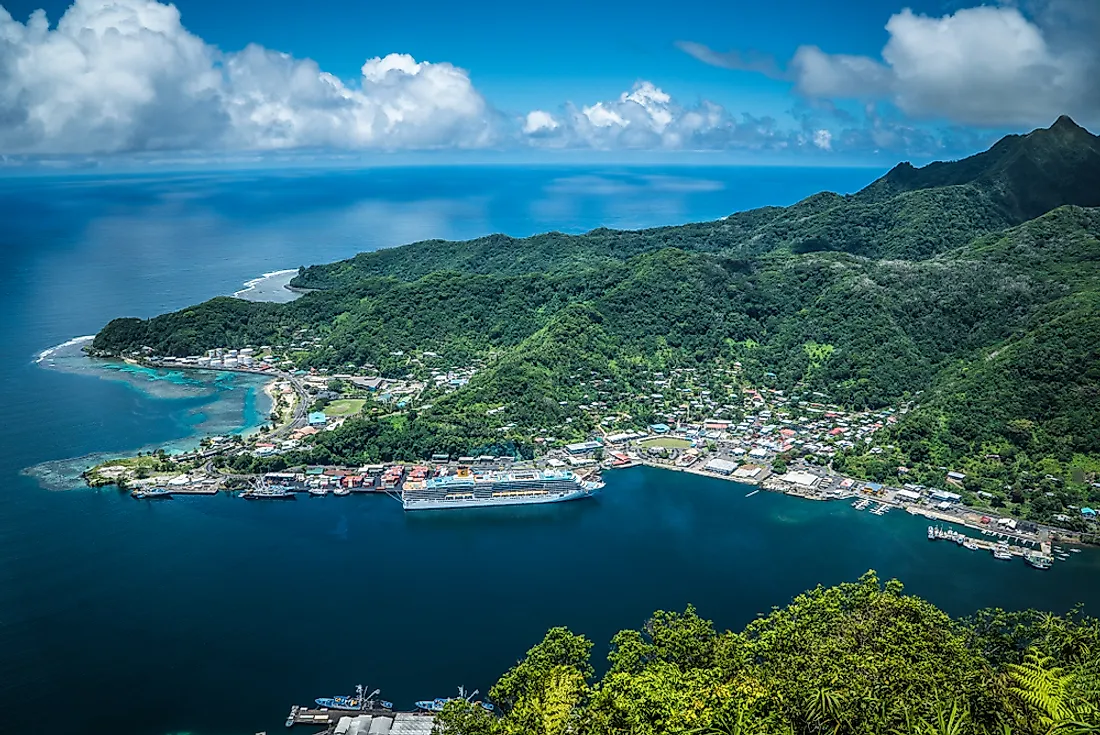What Is The Capital Of American Samoa?

American Samoa is an unincorporated territory of the United States. Located in the South Pacific Ocean, southest of the Independent State of Samoa, American Samoa is made up of five islands, plus two coral atolls. The territory encompasses an area of 77 sq mi and had an estimated population of 55,689 in 2018. The capital of American Samoa is Pago Pago, located on Tutuila, which is the territory's main island. Pago Pago has a population of 3,656 and is the only modern urban center anywhere in American Samoa.
History of Pago Pago
Human settlement in Pago Pago can be traced as far back as 4,000 years. Its more recent history is linked to the United States Exploring Expedition led by Charles Wilkes in 1839. In response to rumors of interest in the island by both Britain and Germany, the United States signed a treaty with Pago Pago's indigenous population in 1872. This treaty was significant as it gave the United States critical influence over the island, which was later acquired by the US through a treaty signed in 1877, and became American Samoa. A naval base was built on the island in 1878 to serve as a refueling station. Pago Pago was later named the capital of American Samoa in 1899.
Economy
Pago Pago is recognized internationally as a large scale producer of canned tuna, which is essentially the territory's only export good, and contributes to more than 90% of total industrial activity in American Samoa. In fact, American Samoa was ranked the fourth largest processor of canned tuna globally in 1993. Other economic activities include locally produced handicrafts and souvenirs sold to tourists in Pago Plaza, Fagatogo Square Shopping Center, and Fagatogo Market, which is home to numerous restaurants, bars, and entertainment spots including live music.
Tourism and Attractions
Given its location in the South Pacific, Pago Pago attracts numerous tourists throughout the year. Most tourism in American Samoa occurs in Pago Pago, which receives approximately 34,000 visitors each year, mostly from the United States. Until 1980, tourists had the opportunity to view Mt. Avala from a cable car that ran over the island. However, in April of that year, the cable was damaged by a US Navy plane on Flag Day. Although the cable was repaired, it was soon damaged by a tropical cyclone, and service has not been restored. Nonetheless, tourists can enjoy other attractions on the island, such as the National Park of American Samoa. Other tourist attractions include the Rainmaker Hotel and the Sadie Thompson Inn, which has been named to the US National Register of Historic Places.
Climate and Natural Events
Pago Pago experiences a tropical rainforest climate and receives significant amounts of rain. In fact, it is one of the wettest places in the world. The island is also susceptible to hurricanes and cyclones, which vary in severity and have resulted in substantial destruction. For example, the island was affected by a tsunami in September of 2009, causing the deaths of nearly 30 people and the destruction of infrastructure, buildings, and power plants. Waves of heights greater than 5 feet hit the city, the highest being 6.5 feet.











